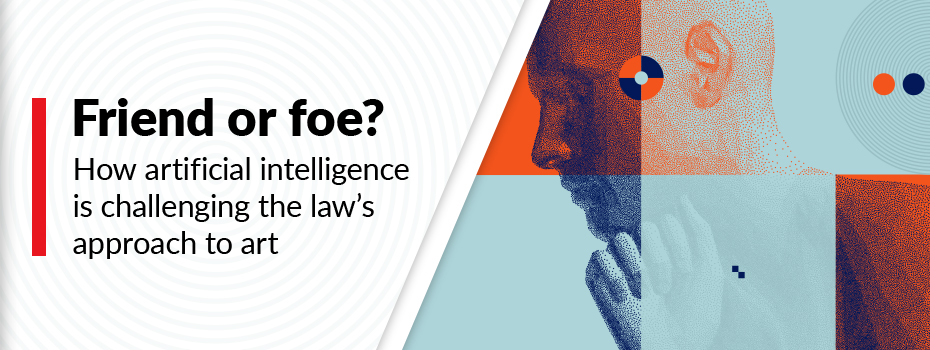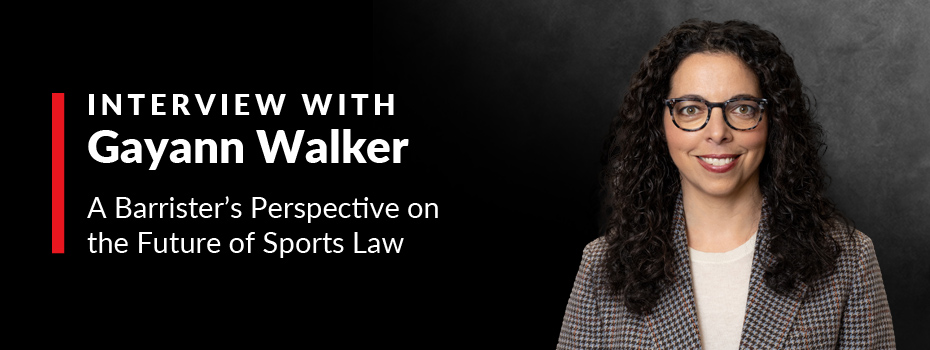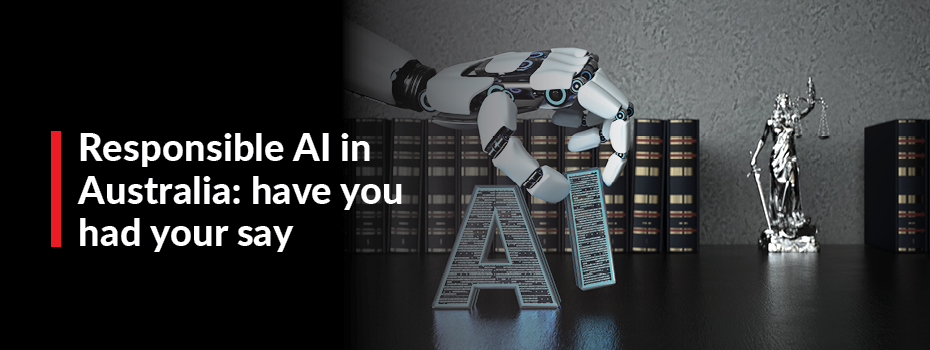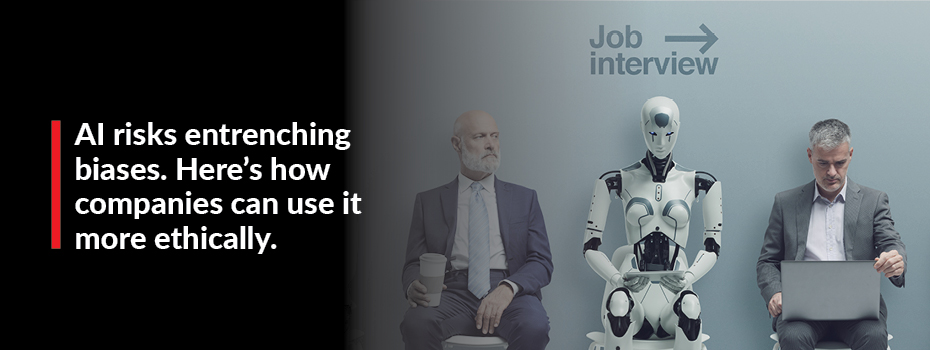
Friend or foe? How artificial intelligence is challenging the law’s approach to art
12 July 2023 14:30
Alana Kushnir and Mia Schaumann GUEST WORK AGENCY
Introduction
The law has always played catch up with technological change.
With the evolvement of artificial intelligence (AI), that sentiment is alive and well.
AI is “computer technology that aims to simulate intelligent human behaviour”. AI’s relationship to the law is particularly provocative in the field of art. When it comes to the authentication of artworks, connoisseurship, provenance documentation and scientific analysis are the three main attribution tools used by historians and conservators. However, some experts are adopting machine learning technology as an alternative method of authentication. However, as Part 1 of this article explores, we are yet to see these findings admitted in legal proceedings. Machine learning technology is also being adopted by artists as a new tool in the creation of artworks. Part 2 of this article will explore how in seeking to protect “creations of the mind”, intellectual property law is challenged by these advances in artistic practices. So, are AI and the law friends? Or are they foes?
For lawyers advising artists and art-related businesses, they should consider that today, AI and the law are mainly foes. However, it is only a matter of time — and legislative intervention perhaps — before the law embraces the benefits of AI.
This article comes from the experts behind the Intellectual Property Law Bulletin which for the past 15 years has assisted lawyers in maintaining currency with the legal development and reform relating to copyright, patents, trademarks, designs, licensing, trade secrets and data protection. At all times, the practical implications for industry and commerce are considered, with particular reference to publishing, broadcasting, software, electronic storage and transmission of information.
The bulletin is at the cutting edge of this complex and dynamic area of law, gathering current news, opinions and court decisions, and condensing this information to provide subscribers with an accessible source of relevant information.
Subscribers to the Intellectual Property Law Bulletin can read the full bulletin article HERE.
Enter your details here to access part 2 of this article.
Takeaway tips
- AI is proving to be a useful tool for authenticating artworks
- AI findings have not (yet) been admitted as expert evidence in legal cases involving the authenticity of artworks
- Questions around reliability and the amount of weight to be given to AI findings are yet to be addressed by a court or statute
- If AI findings were admitted as expert evidence, they would likely be considered in addition to, rather than instead of, more traditional methods of authentication
Setting the scene: what is artificial intelligence?
Artificial intelligence is a broad term used to describe the performance of tasks by computer programs that traditionally require human intelligence. As Daniel Kiat Boon Seng (Director, Centre for Technology, Robotics, AI and the Law, Faculty of Law, National University of Singapore) and Stephen Mason (Digital Evidence Journal) explain, AI does:
… what is appropriate for the circumstances and the purposes assigned to it, including behaving flexibly in changing environments and objectives, learning from experience and making appropriate choices given perceptual limitations and finite computation.
The capabilities of such computer programs vary from “weak” or “narrow” application to “strong” and even “AGI” application. At the extreme end of the AI spectrum is Artificial General Intelligence (AGI), which does not exist yet. AGI “greatly exceeds the cognitive performance of humans in virtually all domains of interest”. Similarly, “strong” AI does not exist yet, but is focused on matching human-level intelligence.
“Narrow” AI, which does currently exist, is “developed as an aid to human thought, typically through the use of a system that solves tightly constrained problems”. It is in this subgroup of AI applications that the concepts of “machine learning” and “neural network” sit. More specifically, “machine learning” is the use of:
… algorithms (rules) embodied in software to learn from data and adapt with experience. [Whereas a] “neural network” is a computer that classifies information — putting things into “buckets” based on their characteristics.
The applications of narrow AI are widespread, from automated chatbots and AI assistants like Siri and Alexa to facial recognition software and drone robots.
Notwithstanding its wide application, machine learning has its limits. As the process by which the machine is “trained” involves the machine’s exposure to large amounts of data or “datasets”, the application can produce incorrect or misleading outcomes based on hidden biases in the data.
An example of such a bias is where the data for a facial recognition system skew in favour of particular demographics (known as racial bias) or where the training includes prejudices or stereotypes, the machine learning model will learn those prejudices or stereotypes and perpetuate them (known as association or prejudice bias).
AI as a friend: how artificial intelligence technology can assist the law
There are three main attribution tools that have traditionally been used to authenticate artworks: connoisseurship, provenance documentation and scientific analysis.
Known as the “Morellian method” (after the 19th-century physician and art collector Giovanni Morelli who formulated the method), the practice of connoisseurship relies on the human eye and the knowledge of an artist’s oeuvre, the way an artist might draw a specific part of the human body, like an ear, or a hand, and the style in which an artist might apply paint to mimic leaves on a tree.
Connoisseurship is often used in combination with provenance documentation, being the method of tracking the “chain of title” or ownership history of an artwork to determine if there are any unusual gaps or dubious transactions involved. A range of different types of scientific analysis can also be used as part of the authentication process. For paintings, techniques include using infrared reflectography to see the underdrawings and microscopic analysis of the pigments used and the signs of ageing in the paint layer.
Importantly, as Anne-Laure Bandle explains, “none of these tools is sufficient in and of itself. Instead, they complement each other. Hence, a connoisseur’s opinion-based result should be supported by archival evidence or scientific reports”. Although still uncommon (due to the costs involved and the developer expertise required), in recent years machine learning tools have been used as a fourth “prong” in the authentication process.
The application of machine learning to attribution and forgery detection
In its simplest form, the way in which machine learning can be applied to attribution and forgery detection is as follows.
A dataset of high-resolution images is built using legitimate works by the artist. To improve the algorithm’s discrimination capabilities, they include in the training set paintings by artists of similar style and chronology. The algorithm “learns” the artist’s stylistic traits from the dataset and uses this knowledge to detect the probability of forgery.
An example of the use of this method was the research project spearheaded by Ahmed Elgammal at Rutgers University in the U.S. and the Aterlier for Restoration & Research of Paintings in the Netherlands, “Picasso, Matisse or a Fake? Automated Analysis of Drawings at the Stroke Level for Attribution and Authentication”. The team used a dataset of 297 digitised line drawings by Pablo Picasso, Henry Matisse, Egon Schiele, Amadeo Modigliani and a small number of works by other artists, and proposed a novel algorithm for segmenting individually-drawn strokes.
The characteristics of each stroke is captured using global and local shape features as well as a deep neural network that captures the local shape and tone variations of each stroke …
They found that the method could capture the artist’s individual characteristics at the stroke level.
Commercial AI artwork services
A number of private companies have since been set up to provide AI artwork services. For example, the Switzerland-based Art Recognition has developed an algorithm for detecting fakes using a single photograph of the artwork. Co-founder Dr Carina Popovici has explained their method as follows:
The algorithm is based on a deep convolutional neuronal network which we train to “learn” the characteristics of an artist from a set of original artworks by that artist.
When a new, previously unseen artwork is being analysed, the same type of features are collected and compared to the already stored one. If they match, the new image is labelled as original; otherwise, it is a fake.
Notwithstanding such recent efforts, the admission of machine learning findings in court cases concerning art authentication is largely untested. In art forgery cases, expert witnesses demonstrate a formation of their opinion using a combination of connoisseurship, provenance documentation and scientific analysis.
Case study — Grant v R
In the Victorian art fraud case of Grant v R, the prosecution relied on an analysis of the allegedly fraudulent works by Brett Whiteley prepared by Associate Professor Robyn Sloggett of the University of Melbourne’s Grimwade Conservation Services. As examination-in-chief, Ms Sloggett confirmed the position that she took in her report on Blue Lavender Bay:
… on the evidence available, in particular on the basis of the lack of points of identification with materials and techniques known to be used by Whiteley and in the absence of any verifiable provenance that links the work to Whiteley, … [t]he evidence suggests rather that this work has not been produced by Whiteley.
In her examination, Sloggett also pointed out several discrepancies between the work in question and securely provenanced works by Whiteley.
For example, she explained that the birds had none of the “velocity or fineness” associated with Whiteley’s usual depiction of birds, as though they had been painted with a “dead hand”.
As well as relying on the eye, Sloggett and her colleague took infrared reflectography images which were used by the prosecution to show similarities in the underdrawings. Interestingly however, Croucher J had said that there were “considerable limits on that evidence, as there was no attempt by the prosecution to use photogrammetry to measure and line up, in a precise and accurate way, the underdrawings”.
It could be said then that Croucher J was willing to consider more scientific-based evidence, even though this had not been put forward by the prosecution.
In the US, scientific-based evidence has also been the focus of art forgery cases. For example, in the Knoedler forgery trial, which took place in the same year as Gant v R, forensic testing was used to show that the paints used to create the forged Rothko works were not commercially available at the time the works were allegedly made.
The application of artificial intelligence technology beyond legal scholarship
It is unclear whether a court would establish the admissibility of evidence produced by a machine learning tool, and if they were, what weight would be given to it. To date, the proposition of using machine learning findings as evidence has primarily been the domain of legal scholars.
In September 2021, Lord Sales, Justice of the UK Supreme Court, gave a public address in Singapore on “Artificial Intelligence and Evidence”. In his address, Lord Sales noted that (in the UK) legislation and case law had not specifically addressed the treatment of AI-generated evidence.
He pointed in particular to the research of (Professor Seng and Mason), which has focused on the validity and reliability of AI applications as evidence in criminal and civil cases. Mason and Seng have explained that AI:
… challenges presumptions in evidence about the reliability of automated systems, questions the characterisation of records from AI systems as real evidence or as hearsay, deepens the analysis of such evidence on the grounds of authenticity and even goes to the issue of whether such evidence can be the proper subject of legal disclosure or discovery …
In other words, Mason and Seng suggest that AI could be a game-changer when it comes to the treatment of evidence in legal proceedings. Lord Sales reasserts this point, specifically noting that AI could assist judges in coming to the right outcome in cases.
Conclusion
In a time where machine learning tools carrying out operational processes in the legal system are alive and well, it’s surprising that aside from Lord Sales and Mason and Seng’s aforementioned observations, there is so little commentary or legal cases on the admission of AI as evidence.
Perhaps it’s only a matter of time for the admission of machine learning findings to be tested in a court. How this will affect proceedings involving the authentication of art is yet to be determined.
Practical Guidance Intellectual Property module is a key resource for legal practitioners when working on intellectual property matters. The module contains best practice know-how for managing IP matters involving registering, maintaining, commercialising, challenging and defending intellectual property rights in both Australia and New Zealand.
Quickly access information on intellectual property all over the world and use client training materials and infographics to educate your client on leveraging and protecting intellectual property in a business.
Latest Articles
-
 Gayann Walkers is a well-respected Victorian Barrister. Tis interview focuses on what it takes to be a Barrister in sports law, and what the future of the field looks like.
Gayann Walkers is a well-respected Victorian Barrister. Tis interview focuses on what it takes to be a Barrister in sports law, and what the future of the field looks like. -
 The growth of artificial intelligence technologies in Australia has recently come under the spotlight, as the Albanese Government looks to review existing regulatory and governance mechanisms and establish applicable safeguards that are fit for purpose in the current day and age.
The growth of artificial intelligence technologies in Australia has recently come under the spotlight, as the Albanese Government looks to review existing regulatory and governance mechanisms and establish applicable safeguards that are fit for purpose in the current day and age. -
 Artificial Intelligence (AI) is developing fast – but how should it be used? Over the past month, the ethical use and development of AI have been heavily scrutinised as policymakers, intellectuals, and industry leaders debate whether a moratorium should be imposed on AI’s development, or whether AI should be embraced in the name of economic growth.
Artificial Intelligence (AI) is developing fast – but how should it be used? Over the past month, the ethical use and development of AI have been heavily scrutinised as policymakers, intellectuals, and industry leaders debate whether a moratorium should be imposed on AI’s development, or whether AI should be embraced in the name of economic growth.
Practical Guidance
Your one-stop solution for accurate legal answers from Australian legal experts. Tools, practically focused guidance notes, checklists, precedents, and training materials support and streamline your legal workflow.
LEARN MORE LexisNexis
LexisNexis